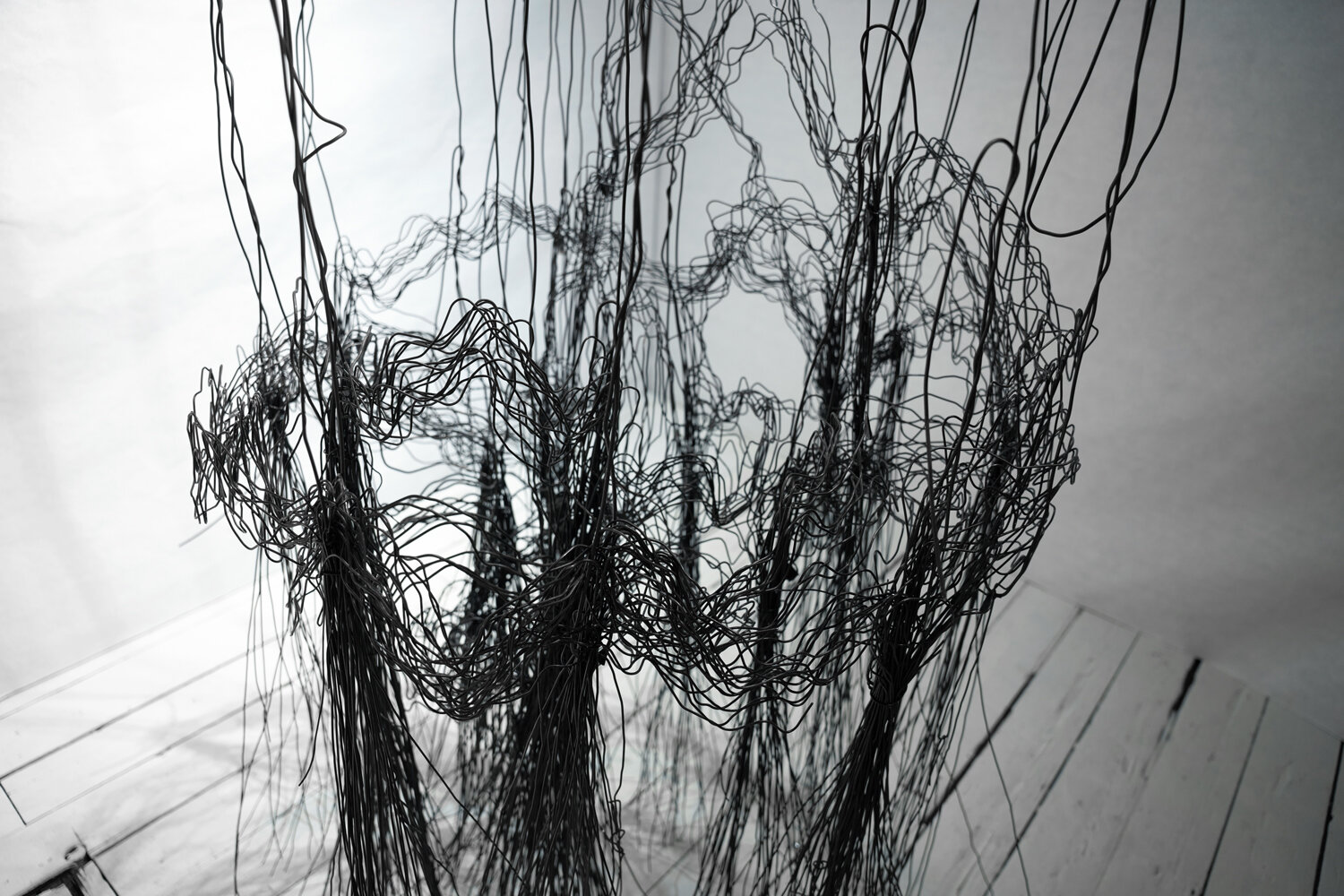
The Engine of Loss
2021
steel wire installation
dimensions 42’’ x 42’’ x 156’’







How can something that has disappeared weigh more than when it was present? What is the nature of loss?
This installation was created using galvanized steel wire, a ubiquitous industrial material used to bundle raw materials on construction sites in urban environments. Having grown up in cities, the landscape of my youth was one where the clouds visited the skyscrapers, where the wind hurled itself against brick buildings and caressed concrete pavements. My observation of my ever-morphing surroundings was the background against which I developed a notion of my identity. As for many, my environment is a chimeric blend between the sublime and the industrial, the sprawling and the desolate, the looming and the hopeful. I am curious about how our personal experiences can alter our understanding of the origin of existence and the process of change. How do we come about to reach self-awareness as we grow as individuals? I sought to learn about how processes of change propagate through each individual’s idiosyncratic reality. I offer here to express and adumbrate on the notions of cosmology, of loss, of change, and of energetic transformation as an overture to introspect on the foundation of our existence.
This work was informed by musings in the visual arts, mathematics, particle physics, language, various philosophies and the personal experience of loss. In Eastern philosophy, the Void, the Emptiness as represented by the circular Enso in Zen Buddhism, is an inherent part of encompassing existence, echoing the contradictions and dualities that are integral to our reality. Such paradoxes are examplified by physicist Werner Heisenberg's Uncertainty Principle and elaborated in the existentialist branch of Western philosophy in musings by Jean-Paul Sartre in Being and Nothingness. The circularity of natural cycles is referenced in this work, aiming to allude both to a source and a sink, a flux between beginning and end. The presence of sinuous lines created using steel harken to something mathematical and natural, linearly drawn yet sculptural because of the density of lines. The work is a poetic chimeric expression which is simultaneously sprouting and falling, brooding and ominous, quiet yet energetic, obscure and contemplative, and ultimately aspires towards redemption.
What is the foundation of our existence? In the vocabulary of modern science, particle physics refers to the building blocks of our chartered universe as subatomic particles. The discovery of subatomic particles goes back to the late 19th century, yet the question of how these particles acquired their mass remained a mystery until a few years ago. The discovery of the Higgs boson gave rise to a new conceptual frame from which an omnipresent [Higgs] field can explain how mass is imparted onto subatomic particles. However, the mechanism by which mass is imparted remains unknown.
Patterns of energy dispersal are ubiquitous on Earth; tree and root branchings, water rivulets, the veins and arteries through which blood courses through our bodies, and rain droplets are all examples of natural patterns of energy dispersal. It is theorized in the biological and applied sciences that energetic dissipation occurs by maximizing the entropy in the shortest amount of time. Nonetheless, it is a popular misconception that entropy is about disorder. Nature does not seek disorder. Nature is more expansive; it seeks energetic diversity. We came to be who we are because of the wealth of experiences, of mysteries, that came before us.
The Engine of Loss churns the void in search of meaning behind that which is senseless.